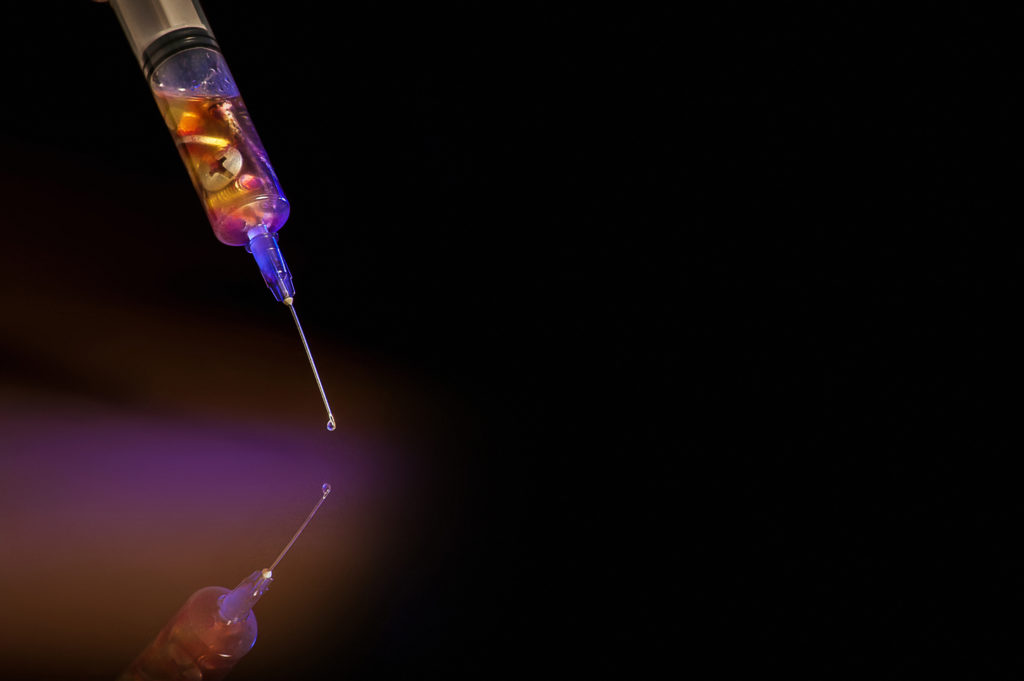No we aren’t talking James Bond here. However one of potassium oxalate's uses is as a chelating agent that bonds to heavy metals in the bloodstream and is effective in the treatment of heavy metal poisoning. It is also used to quantify, purify, strip, and bleach different target materials and compounds, among other useful applications.

In recent blog posts, we have discussed heavy metal poisoning in humans and our water sources, and also different methods for cleaning water so it is safe for use. We have also discussed different types of biosensors used in multiple scientific and medical applications, including detecting the presence of heavy metals in the bloodstream. Today, we are connecting the ever-relevant topics of clean water and blood poisoning to our discussion of potassium oxalate.
What is it?
Potassium oxalate, synonymous with potassium oxalate monohydrate (C2K2O4 • H2O), is a chemical compound that is white, odorless, and crystalline in form. In fact, potassium oxalate is naturally found in the body and is produced when we metabolize glyoxylic acid or ascorbic acid, then excreted in our urine. It is soluble in water, but not in alcohol. It is helpful in varied processes, such as bleaching wood products, removing rust in metals, quantifying amounts of calcium in analytical chemistry, and also processing rare-earth metals. Not to mention, some interesting clinical trial results have come out of using potassium oxalate in gel form on human teeth to reduce sensitivity after periodontal procedures like subgingival scaling and root planing (SRP).
According to researchers from a study on the benefits of potassium oxalate for dental applications, it certainly helps with tooth sensitivity. A pool of 56 subjects were at random given normal toothpaste and mouthwash versus mouthwash with potassium oxalate solution. When studied, the subjects who received the potassium oxalate mouthwash demonstrated significantly less sensitivity. Enough people dread the dentist chair! Any solution that can assist in lessening ailments concerning our teeth is welcome news.
Water Treatment Processes
As previously mentioned, potassium oxalate can determine the presence and amount of minerals and heavy metals, as well be utilized as a chelating and reducing agent. Let’s look at how this binding agent helps to purify and treat different substances riddled with toxins.
Potassium oxalate monohydrate is a powerful binding compound. In analytical chemistry, potassium oxalate is used as a reagent to identify calcium and other heavy metals in a substance. In water, it can locate toxins such as heavy metals and bind to them, thus helping in water treatment processes. Once the heavy metal molecules are identified, potassium oxalate can also be used as a chelating agent to bind and help rid water of the contaminating toxins. But heavy metal poisoning can happen in innumerable ways beyond poisoned water sources.
Beyond Water: Potassium Oxalate as a Chelating Agent
From the digestion of animal flesh with high metal levels (think tuna and mercury), to ingesting lead paint and industrial emissions, metal poisoning in modern times is much more common than one would think. Lead, cadmium, and mercury are of particular concern when talking about metal poisoning. They, and other toxic heavy metals, cause many diseases, some fatal, and the aforementioned three are known carcinogens. A chelating agent is a compound that typically contains carbon molecules. When introduced to a substance such as blood, it forms bonds to heavy metal ions and helps transport and excrete the toxins out of the system.With water soluble agents such as potassium oxalate monohydrate, the toxins are flushed out via the kidneys. Chelating agents, such as potassium oxalate, are therefore more important than ever in medical applications where heavy metal levels are too high in biological entities. Animals (including us humans) and plants naturally produce chelating compounds, but when a biological lifeform’s heavy metal levels are too high, treatment with chelating agents is helpful in the purification process. This process is initiated by injecting the agents into the bloodstream, and is proven to work in the case of lead poisoning. However it should be noted that other metals and uses of chelation therapy can potentially have negative side effects and remove vital minerals from the body, so it is important to factor that in. Many researchers will add vitamins and minerals to the injectable solution to make up for this.

Chelating agents vary with the heavy metal that is being targeted. Certain agents are more appropriate according to the specific toxin. So, in order for chelation to be deemed the effective method of treatment for a condition, the most apt chelating agent must be partnered with the toxins in question. Also, it should be ensured that through close monitoring and tailored dosage, the severity of the symptoms will be significantly lessened. It is not a “one size fits all” treatment! This type of therapy is effective in many cases and potassium oxalate monohydrate is certainly helpful when targeting certain heavy metals.
We Stand Out
At AG Scientific, we deliver potassium oxalate monohydrate, alongside many other reagents, enzymes, ionophores, and more, and we tailor custom reagents to meet the needs of our consumers at an individual level. We take the customer experience seriously and cut out unnecessary bureaucracy that might prolong an order being processed and delivered. This is because we take a direct one-to-one approach in serving our customers.We pride ourselves in being able to offer such a personalized approach within such areas as medical technology and diagnostic materials, while still remaining competitive with other large life science distributors in the field.
